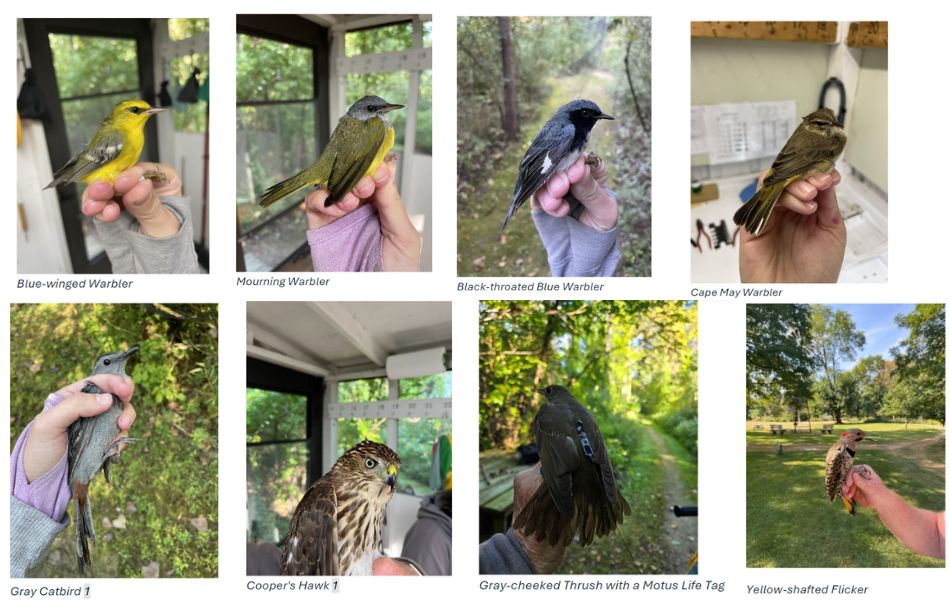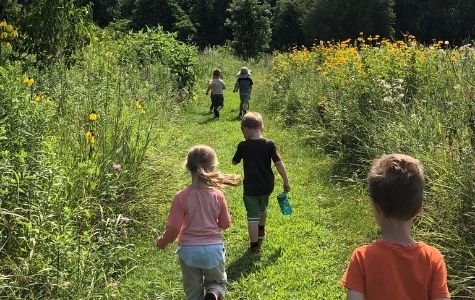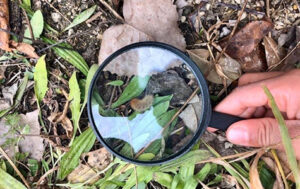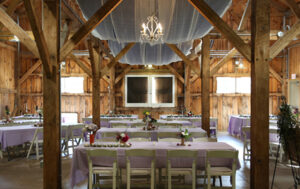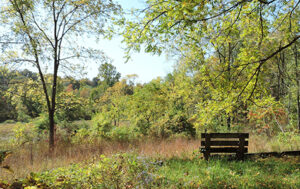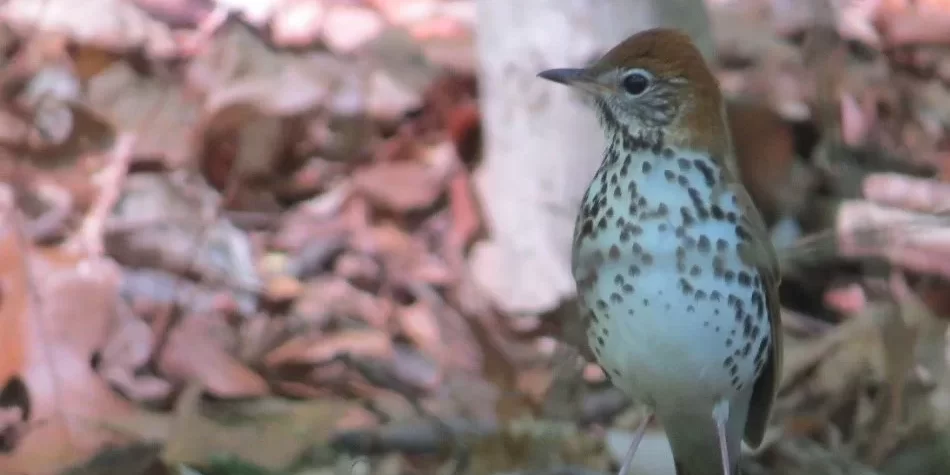Weeks 1-2:
With the first few weeks of banding at KVBO wrapping up, migration is in full swing! Locally breeding birds like Gray Catbird and American Goldfinch have dominated our totals so far, but steady movements from passing warblers continue to represent our early fall migrants.
Hummingbird banding demonstrations have taken place at KNC each of the last three Friday mornings, drawing a few dozen visitors in total. We banded 7 Ruby-throated Hummingbirds last Friday and banded one this past Friday in addition to recapturing one previously banded hummingbird. It was a delight to see all our visitors mesmerized with both the hummingbirds and our usual songbird banding, as I myself am still amazed at the delicate art of banding such minuscule birds!
We also captured several MOTUS tagged Wood Thrushes lingering at Pitsfield where several breed in the summer. Wood Thrushes are being tagged as part of an ongoing Fish and Wildlife Service project that will allow us to track their migration. Additionally, Veery (breeding species here) and Gray-cheeked Thrush (long distance migrant) have been tagged for a separate KVBO project. When a tagged bird passes within a 20 kilometers of a MOTUS tower, the solar powered tag will relay information on their location and the timing of their migration.
Week of Sep. 9th-13th
Kalamazoo Nature Center:
Monday-Tuesday:
The week started off somewhat slow, with 16 new birds captured on Monday but ramped up a little on Tuesday with 30 new birds. The sun and heat forced us to close our nets early, but we still managed to capture a few interesting species. A single hatch year (HY), Palm Warbler found its way into our nets on Monday. This little bird was a little drab and had me stumped for a while since it lacked the rufous crown. We also captured a few Indigo Buntings, most of which are in drab brown plumage in the fall. However, we were able to identify one as a HY male based off the single blue feather on its breast. HY Indigo Buntings are notoriously difficult to sex throughout the summer and fall, so it was cool to be able to identify this one as a young male. The weather is looking hot and sunny for the foreseeable future, so hopefully our efforts to catch interesting early migrants are not dampened.
– Olivia, Banding Assistant
Wednesday-Friday:
The latter portion of the week at KNC brought lots of sun and moderate heat, neither of which are conducive conditions for banding birds. Despite this, we managed to band 43 new birds on Wednesday with decent warbler movement. Several Magnolia, Tennessee, Bay-Breasted and Black-throated Blue Warblers kept us busy most of the morning. A few Hatch Year Indigo Buntings were delightful as well, if not underwhelming for their lack of the titular blue feathers! A pair of slow, sunny mornings Thursday and Friday prompted early closing times for both days, with only 17 and 23 birds banded, respectively. A few stray goldfinches and a mere three warblers comprised most of the birds we banded Thursday. Common Yellowthroat seemed to be the common bird Friday, but a female Blackburnian Warbler and a Yellow-shafted Flicker to cap off the morning were the highlights. Friday was also the last day of Hummingbird Banding demonstrations at KNC for the season. We only managed to band one hummingbird and recaptured another that had been banded the previous week; a sign that most of our hummers have started to flee the area for the season as Jewelweed and other sources of food have dissipated. Still, we welcomed 10+ visitors that were still happy to observe a pair of hummingbirds as well as our usual songbird banding in the barn.
– Connor, Banding Assistant
Pitsfield Banding Station:
Monday-Tuesday:
Activity at Pitsfield has remained steady through most of the week, with bird totals ranging from 30 to 40 birds most of the week. Still, the nets have reluctantly closed early due to sun or wind most days of the season so far. A healthy heaping of Gray Catbirds and Swainson’s Thrushes have kept the nets populated, and a decent movement of warblers brought Tennessee, Magnolia, Bay-Breasted and Nashville Warblers. Occasional visits from Black-throated Green and Black-throated Blue warblers as well as a Blue-winged Warbler earlier this week have provided a nice splash of color. Without a doubt the highlight of this week was a surprise young male Cooper’s Hawk in one of our nets this past Tuesday. In most raptor species, the males are typically smaller than females and this hatch year hawk was brown and streaky overall, lacking the gray back feathers and red eye that we would see in adults. This was my first time handling and banding any species of hawk, a harrowing and humbling experience! Rich and Brenda, who banded raptors at Whitefish Point for decades, shared a sliver of their knowledge on banding and safely handling hawks; I learned to use the “popsicle grip” to hold the hawk, which safely holds their legs, tail and wings in place while the banders take all the measurements we need. Keeping their legs secured to avoid any scratches or bloodshed from the hawk’s talons is key, but thankfully they tend not to avidly bite with their razor-sharp beaks!
– Connor, Banding Assistant
Wednesday – Friday:
The latter half of the week at Pitsfield brought us similar capture rates with 47 new birds on Wednesday and 43 new birds on both Thursday and Friday. Catbirds are among our most frequent visitors as we banded a total of 32 new ones and recaptured 13 more. Although common, I enjoy handling and processing these guys because they can be aged very easily. Hatch years (HY) have made up the bulk of our catbird captures and can be easily identified as young birds by their brownish gray iris. After-hatch-year (AHY) catbirds have a dark maroon eye that is almost black. We captured only a couple AHY catbirds, but it was cool to notice the difference in eye color. Besides droves of catbirds, we managed to have a warbler-heavy day on Friday, capturing 26 warblers of 9 different species! A highlight for me was a single Blue-winged Warbler, which was the first I had ever seen. Another exciting and new species for me was the Mourning Warbler, which we caught two of on Thursday, one male and one female. These can be easily confused with the similarly looking Connecticut Warbler and Common Yellowthroat but can be distinguished by their size (smaller than Connecticut and larger than the Yellowthroat), lack of a bold, complete eye ring, and bright yellow underside in the fall. We hope to keep up the pace and capture more exciting warblers in the following weeks!
– Olivia, Banding Assistant
